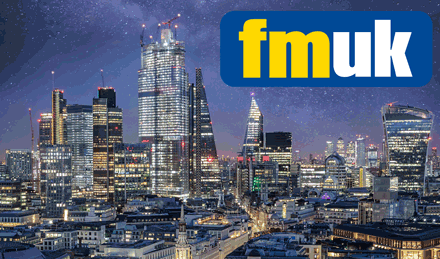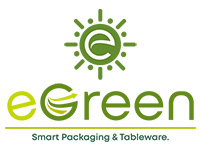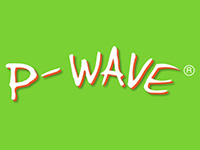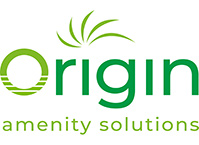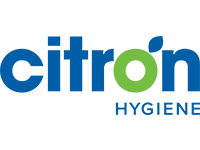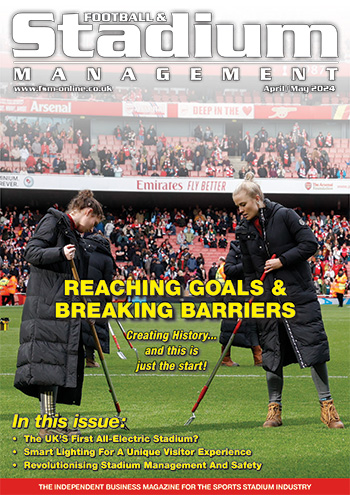How To Ensure Stadia Are Safe For Staff And The Public Post-COVID
 Written by Shaun Doak, CEO of React Specialist Cleaning
Written by Shaun Doak, CEO of React Specialist Cleaning
With Boris Johnson’s recent announcement on the possibility of opening stadia in October, the nation’s gaze has already focused on the new football season and the potential of live sport in the coming weeks. Before that, it is essential that all sporting arenas are made clean and safe to eliminate the lingering worry over COVID when thousands gather en mass.
To prevent the spread of illness and the threat of a potential second wave, employers and employees alike must fully understand the risks of returning to offices and workspaces, and must know how to mitigate them effectively for the safety of the public.
As COVID-19 is a fairly new risk to health and safety, there has been a lot of inaccurate information spread on how to effectively clean and protect against it. It is crucial that individuals have expert advice, and complete suitable and sufficient risk assessments, when preparing workplaces for the safe return of staff and the public.
With large, open and populated spaces, such as stadiums, it is especially important that employers can ensure all areas are thoroughly cleaned and COVID-free before reopening, followed by consistent cleans whilst open. Not only should public spaces be kept effectively cleaned, but there must also be attention to the office and meeting spaces, behind-the-scenes.
The most important element is to have regular and comprehensive cleaning, hygiene and test plans in place, to ensure all areas are decontaminated effectively. Given how large stadiums are, it could be easy to miss areas, so a robust plan is vitally important, undertaken by a well organised and managed team.
It is advisable, especially with areas as large as stadiums, that the initial deep clean of public spaces are outsourced to a specialist cleaning company, as they have the expertise and products to complete reliable and thorough cleaning. There are also, however, steps staff can take to ensure a safe environment.
The most thorough cleaning process involves an initial deep clean of an entire area, followed by an increase of the frequency and thoroughness of cleaning going forward. This is especially important for high-touch surfaces such as tables, doorknobs, elevator buttons, seats, toilets, faucets and handrails, and it is important that the methodology you choose is effective. This goes for both the behind-the-scenes areas and any spaces open to the public.
Public use of areas should be monitored, so high footfall or touch areas can be identified to implement a more rigorous and frequent plan that specifically targets these spaces.
The most effective disinfection process includes an initial wipedown of surfaces with a pH-neutral solution, such as hot water and soap, to remove lingering dirt and dust where bacteria and viruses can be absorbed. Then, follow this by applying a virucidal disinfectant which has been certified in disabling viruses such as SARS-CoV-2, the virus which causes COVID-19. When applying disinfectant, make sure to follow the manufacturer’s instructions. This should include guidance on the required ‘contact time’- the time the disinfectant should be left on the surface to effectively destroy the virus.
This combination of cleaning procedures does not kill the virus, but disables it by destroying the protein and the ribonucleic acid (RNA) of the virus. The RNA is the substance that provides the blueprint for making more virus particles, so destroying it leaves the virus with no way to multiply or infect a host cell. Wiping the surface clean of the remaining disinfectant removes all trace of the virus.
Whilst it is crucial to choose the correct and most effective disinfectant, proven to disable viruses like SARS-CoV-2, many virucidal disinfectants on the market use potentially harmful active ingredients, such as chlorine. When used more frequently or incorrectly, these products can discolour surfaces or cause skin irritation and breathing issues. Environmentally friendly disinfectants can be just as effective, whilst providing a safer alternative.
The use of UV lights can also be beneficial as part of a deep clean, mostly for behind-the-scenes office and meeting spaces. UVC, with its high energy, has been proven to destroy similar coronaviruses to SARS-CoV-2, and so can be useful for decontaminating areas quickly and efficiently. Like most cleaning products at the moment, however, due to the very recent outbreak of the virus, the use of UVC has not yet been clinically tested against the particular strain that causes COVID-19. The use of UVC can also be dangerous, damaging eyes and skin, so its application needs careful care with the use of appropriate PPE. This is just one of the reasons as to why the initial deep clean should be outsourced to a specialist company, followed by regular and consistent cleaning in-house.
Realistically, there is no need for stadia to be deep cleaned when there is no risk of contamination from the public, such as between events. In the current climate, however, a deep clean before and after every event or match day would prevent potential contamination and provide the public with reassurance of their safety. Further to this, all areas accessed during training sessions should also be regularly cleaned.
With the public travelling from all over the country to attend events, it is especially important to ensure a safe environment. Good planning is crucial to allow social distancing and hygiene standards to be maintained. Implementing one way traffic systems and barriers to separate people can help to upkeep required distancing in areas where it can be difficult to separate people, such as in stadium audiences.
Encouraging good personal hygiene, both of staff and the public, is also crucial to preventing the spread of the virus. Whilst the use of hand sanitiser can be quick and easy, washing hands thoroughly with soap and hot water has a greater efficacy in washing away viral contaminants. If soap and water are not easily accessible, make sure hand sanitiser stations (non-touch preferrable) are provided around the space, with at least 70% ethanol concentration.
The use of infra-red digital thermometer testing of the public should also be strongly considered upon entry to the space for every event. Players, coaches and behind-the-scenes staff should be tested daily, with those with high temperatures being turned away. Employees, especially where in frequent contact with the public, should be provided with the appropriate personal protective equipment, such as face masks, visors or gloves, where suitable.
With the government looking to reopen public spaces in the near future, now is the time to begin preparations to ensure the safety of employees and the public, to help reduce the spread of the virus and provide safe environments for all.
Management of these areas must consider implementing these increased deep cleaning and hygiene measures into their everyday schedules to protect employees and the general public, providing them with peace of mind and confidence in returning to the stands.










